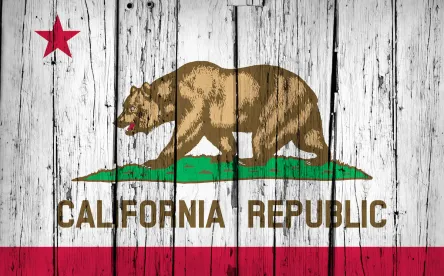I. INTRODUCTION
Microgrids have long been seen as a means to provide electricity customers with more control and security regarding their energy use. In 2018, California passed Senate Bill (“SB”) 1339, which directed the California Public Utilities Commission (the “Commission”), the California Independent System Operator (“CAISO”), and the California Energy Commission (the “CEC”) to jointly craft a microgrid policy framework. This policy has taken on new urgency in the wake of last fall’s Public Safety Power Shutoffs (“PSPS”), as consumers evaluate their energy security options to mitigate the intentional blackouts imposed during periods of heightened wildfire risk. On September 19, 2019, the Commission issued an Order Instituting Rulemaking (R.19-09-009) that will evaluate whether and how microgrids will reduce greenhouse gas emissions, protect California ratepayers, and advance California’s progressive environmental goals.
II. OVERVIEW OF SB 1339
SB 1339’s preamble identified the reliability benefits realized from operating distributed energy resources (such as onsite solar, storage, and microgrids) in parallel with the larger grid. Consistent with other California renewable energy objectives, SB 1339 tries to ensure that the benefits of microgrids do not inure only to wealthy customers or large corporations that can afford to pursue them.
Specifically, new Public Utilities Code section 8371 directed the Commission, CAISO, and CEC to “facilitate the commercialization of microgrids for distribution customers of large electrical corporations” by:
-
developing microgrid service standards that meet state and local permitting requirements;
-
reducing barriers for microgrid deployment without shifting costs among ratepayers;
-
developing rates and tariffs to support microgrids, while prioritizing system, public, and worker safety and not shifting costs among ratepayers;
-
forming a working group to codify standards and protocols to meet state electrical corporation and CAISO microgrid requirements; and
-
developing a standard for direct current metering in Electric Rule 21 to streamline the interconnection process and lower interconnection costs for direct current microgrid applications.
III. COMMISSION RULEMAKING R.19-09-009
On December 12, 2019, the Commission’s Energy Division held a workshop intended to identify actions it could take in early 2020 to reduce ratepayer impacts caused by the PSPS, as well as contemplate longer-term solutions and policy issues to satisfy Section 8371. During the workshop, both the Commission and stakeholders expressed support for microgrids as a means to improve resiliency and reduce the economic and health and safety impacts of the PSPS. Because microgrids are often integrated with, but can operate independently from, the regulated distributed grid, a recurring issue was how to align microgrid policy with existing tariff provisions. For instance, the existing Net Energy Metering (“NEM”) 2.0 tariff limits the capacity of a battery system as a condition toward retaining eligibility for NEM rates. Because a microgrid capable of “islanding” may require a larger battery system, under the current regime ratepayers could be forced to choose between the resiliency offered by a microgrid and the recurring revenue offered under NEM.
After evaluating these and other workshop comments, on December 20, 2019, the Commission issued a Scoping Memo, which divided R.19-09-009 into three tracks:
-
Track 1, which the Commission plans to conclude by Spring 2020, focuses on short-term improvements that the Commission can implement by September 1, 2020. The Commission limited Track 1’s scope to (1) prioritizing and streamlining interconnection applications to deliver resiliency services at key sites and locations; (2) modifying existing tariffs to maximize resiliency benefits; (3) facilitating local government access to utility infrastructure and planning data to support the development of resiliency projects; and (4) evaluating investor-owned utility (“IOU”) proposals for immediate implementation of resiliency strategies, including partnership and planning with local government. The Commission must file staff proposals and the IOUs must file proposals for immediate resiliency strategies for outages on January 21, 2020, with comments due on these proposals by January 30, 2020 and reply comments by February 6, 2020.
-
Track 2 will consider the state’s broader policy goals in supporting microgrid and resiliency strategies, including reducing greenhouse gas emissions, adapting to climate change, and protecting the California residents during catastrophic events.
-
Track 3 will address the long-term implementation of SB 1339 and resiliency planning.
IV. CALIFORNIA'S MICROGRID FUTURE
California’s wildfire-caused outages and PSPS shutoffs have catalyzed a new age in the state’s efforts to marry renewable energy policy with reliable and safe energy service. Experts predict that California’s wildfire season will get longer and hotter, and will increasingly impact a greater percentage of the state’s wildland urban interface. As the state’s utilities perform necessary system-wide transmission and distribution maintenance, lawmakers have been warned that outages and blackouts could dominate the energy conversation for years to come. The cheapest and most widely available mitigation strategy—gas or diesel-fired portable generators—run counter to California’s renewable energy goals.
There is hope that a thoughtful microgrid policy pairing renewables, storage, and smart energy management could allow a campus, community, or commercial center to operate independently by disconnecting from the grid, while at the same time meeting California’s renewable energy and greenhouse gas targets. If California can pioneer a framework that encourages and streamlines the deployment of microgrids, while also protecting important environmental goals, that framework could be used as a model for other parts of the United States facing increasingly common and powerful natural disasters. R.19-09-009 presents a crucial step forward for the industry and policymakers alike.



 />i
/>i
